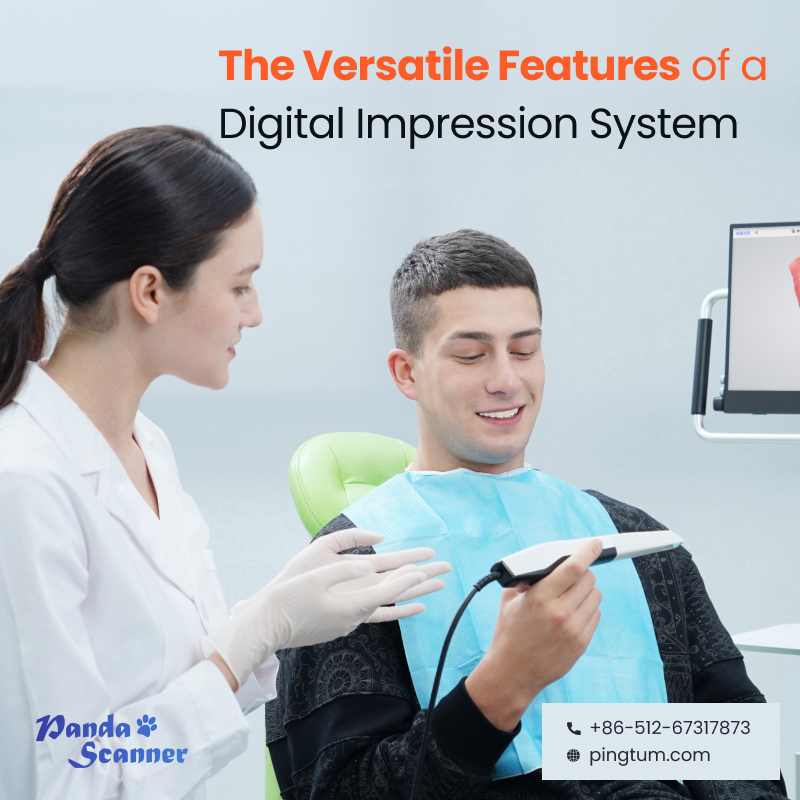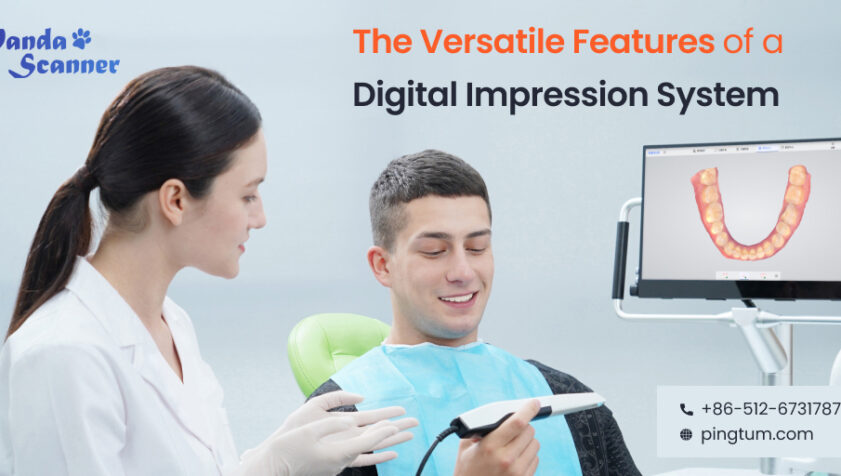Digital technology has completely changed how dental practitioners conduct numerous operations in the ever-evolving area of dentistry. A flexible instrument that has several advantages over conventional impressions is none other than the digital impression system. Our discussion here will examine the remarkable adaptability of digital impression system and how they have changed the practise of dentistry in the current day.

How Digital Scanners Have Transformed the Landscape of Dentistry?
1.Accurate Restorations
Digital imprint systems offer the highest level of intraoral capture precision and accuracy. These technologies produce very precise digital copies of a patient’s teeth and soft tissues by utilising cutting-edge 3D imaging technology. By removing the scope of human errors, restorations can be made with more accuracy, resulting in dental crowns, bridges, and veneers that fit more comfortably.
2. Streamlined Workflow
The days of labour-intensive and clumsy conventional impressions are long gone. Workflow in dental offices is greatly streamlined by digital impression systems. Dentists can quickly and effectively take digital impressions with only a few clicks. This allows for more effective treatment planning and quicker turnaround times for restorations, saving both patients and practitioners significant chair time.
3. Improved Patient Convenience
Traditional impressions can cause patients’ gag reflexes and pain. By doing away with heavy trays and tacky impression materials, digital impression systems significantly improve patient comfort. Digital impressions’ non-invasiveness increases patient satisfaction by lowering fear and boosting trust in dental care.
4. Inclusive Treatment Planning
Systems for digital impressions go beyond simple impressions. They offer a thorough platform for communication and treatment planning. It is simpler for dentists to discuss treatment choices with patients since they can virtually modify and analyse the digital models. This visual tool fosters a cooperative and informed decision-making process among patients by improving their comprehension of and engagement in their own dental treatment.
5. Seamless Integration With CAD/CAM Technology
Digital impressions are easily integrated with CAD/CAM (computer-aided design and manufacturing) technology. Through this combination, effective chairside restorations like same-day crowns are made possible. The basis for designing and milling restorations is created from digital impressions, guaranteeing a flawless fit and beautiful result. That’s why a panda scanner is now a popular digital scanner that is favoured by most dental professionals in their practises.
6. Orthodontic Applications
Orthodontics has undergone a revolution thanks to the development of clear aligner treatments and digital impression technologies. These technologies use digital models to create customised clear aligners, doing away with the necessity for human measurements and conventional physical models. By getting rid of the pain related to traditional orthodontic impressions, this not only increases treatment accuracy but also improves the patient experience.
7. Better Communication
Digital imprint systems make it easier for dental practitioners to collaborate and communicate with each other. Dentists no longer need to physically transfer impressions since they can instantaneously exchange digital data with experts or dental labs. Faster and more precise communication results, which eventually raises the standard of patient care as a whole.
Top Reasons to Avoid Traditional Dental Scanners
Technology breakthroughs have opened the way for more effective and precise operations in the constantly changing world of dentistry. Traditional dental scanners were useful in the past, but contemporary digital dental scanners have several features that make them a better option.
- Inaccurate Results
Traditional dental scanners rely mainly on physical imprints, which can be inaccurate and subject to errors. The accuracy of the imprints can be impacted by elements including material shrinkage and human manipulation, which can undermine the effectiveness of the treatment.
- Time-Consuming Process
Traditional dental scanners require a difficult and lengthy procedure. The entire process can be time-consuming and difficult for patients and dental professionals, starting with the preparation of the materials and ending with the actual taking of physical impressions and waiting for them to set.
- Patient Discomfort
Patients frequently experience pain and anxiety when using traditional scanners. Using trays loaded with impression material to take physical imprints might make people choke and hurt their throats. This may increase patient anxiety and have a negative effect on how they feel about getting dental work done.
- Limited Storage and Retrieval Options
Traditional scanners store imprints physically, which might take up space and be vulnerable to loss or damage over time. It might be difficult to locate individual impressions in a large physical archive.
- Inefficient Workflow
Traditional scanners necessitate extra workflow processes, such as the actual delivery of imprints to dental laboratories or experts. Delays, lost packages, or potential damage to the imprints during transportation are all possible outcomes of this.
Final thoughts
It’s clear that traditional dental scanners are not on par with the digital scanners of the modern world. Also, dental technology has entered a new age of adaptability and accuracy thanks to digital impression technologies. The benefits of digital impressions are evident, ranging from exact restorations to improved patient experiences and effective treatment planning. We may anticipate even more adaptability and game-changing skills in the realm of dentistry as technology develops. Accepting digital impression technologies offers a brighter future for dental treatment and opens up a world of possibilities for dental practitioners.






